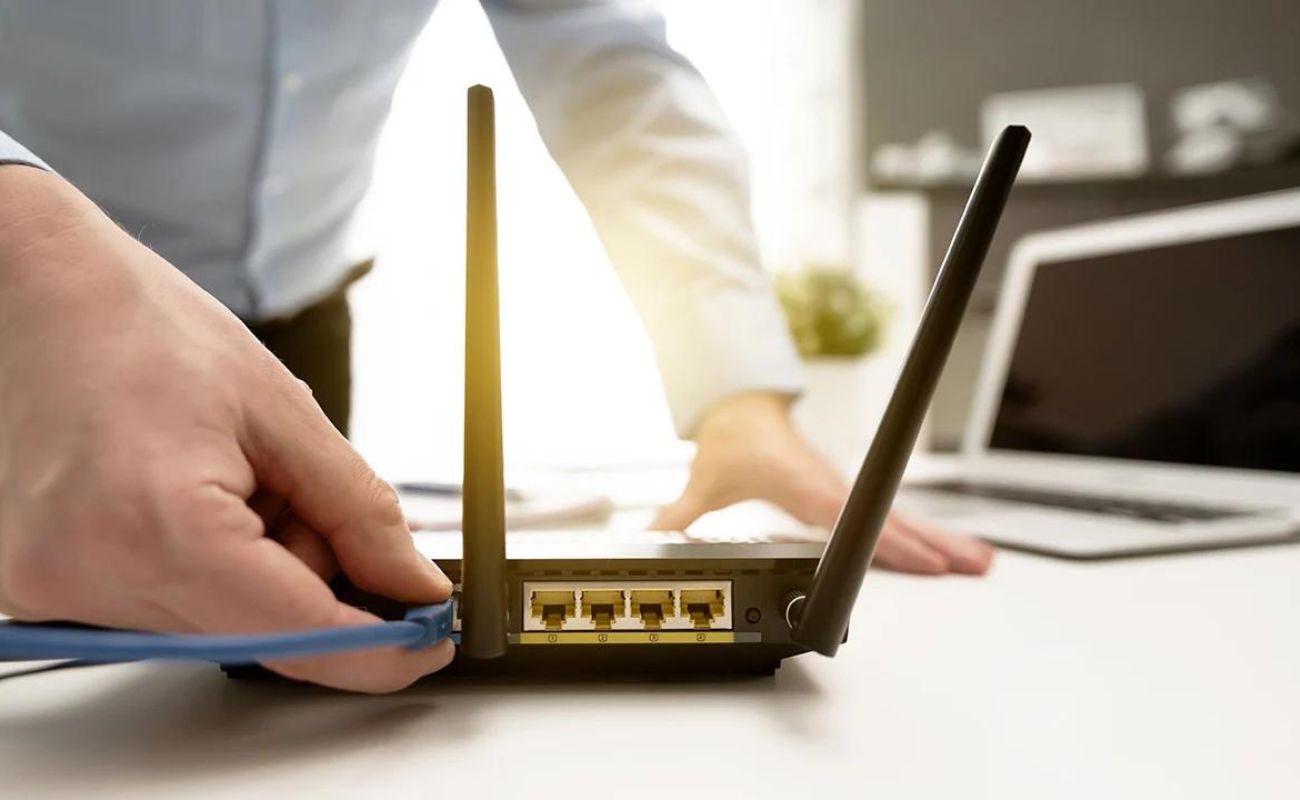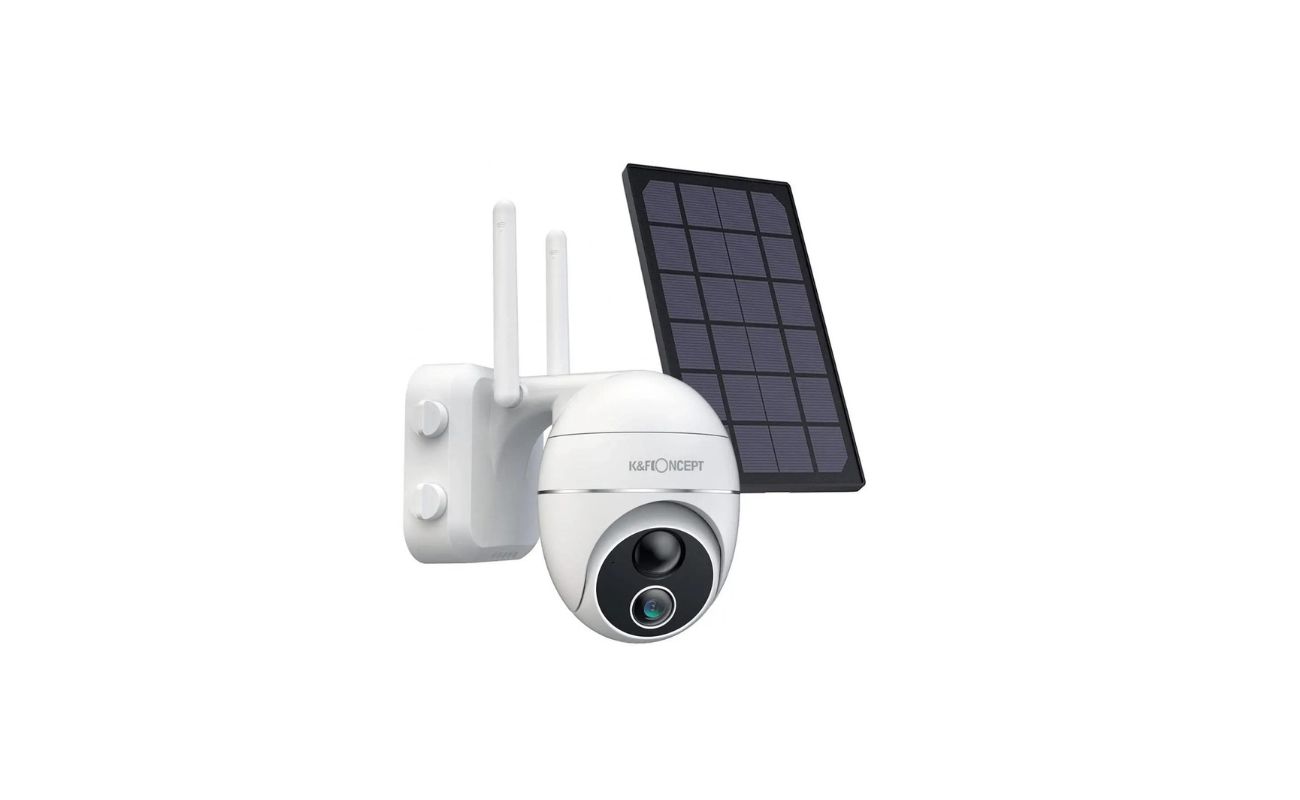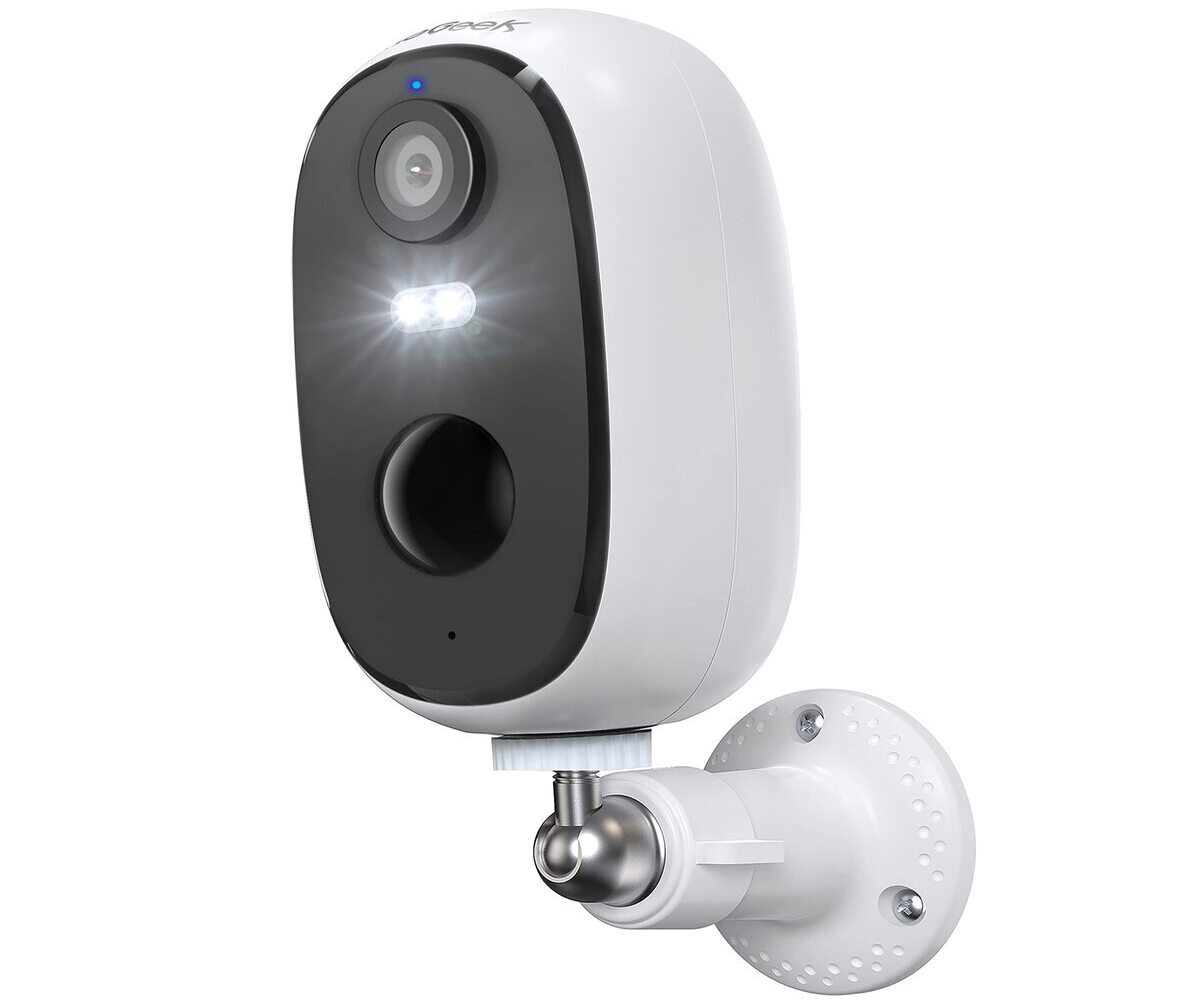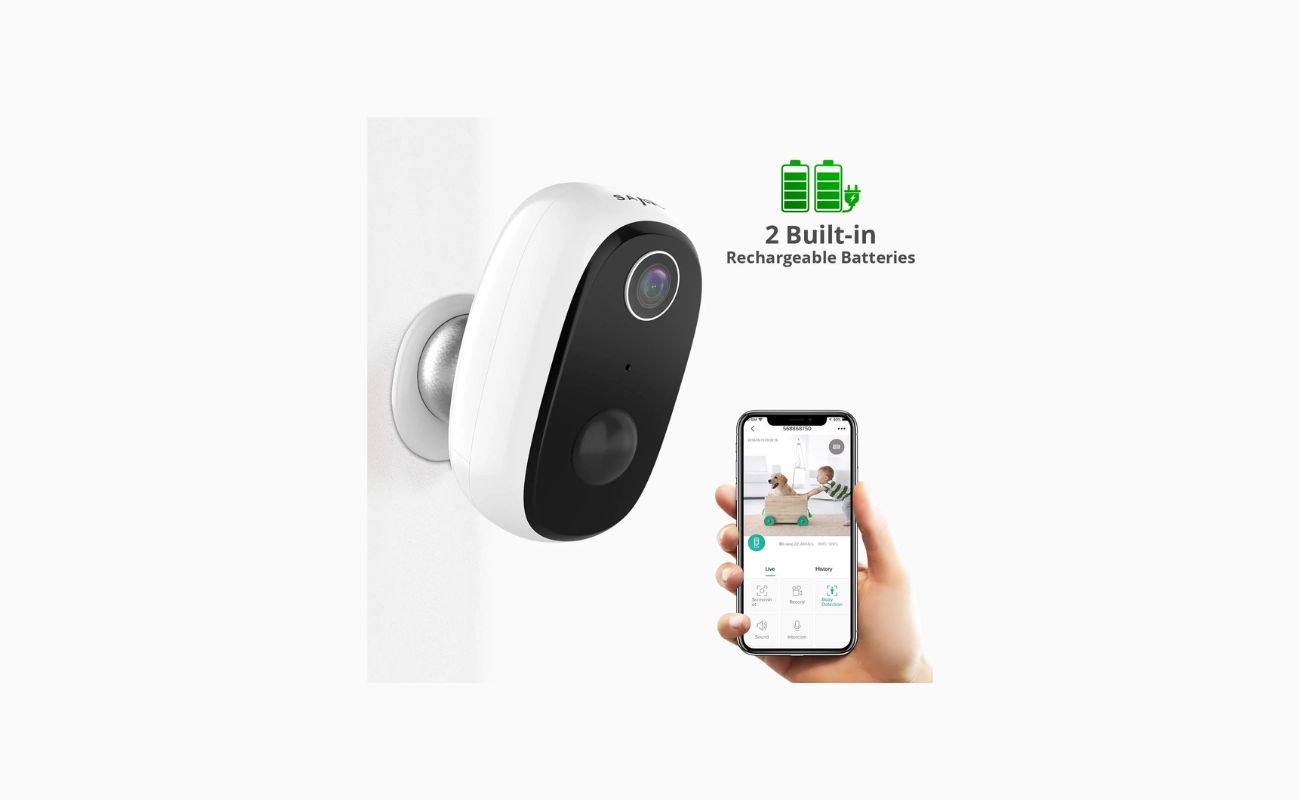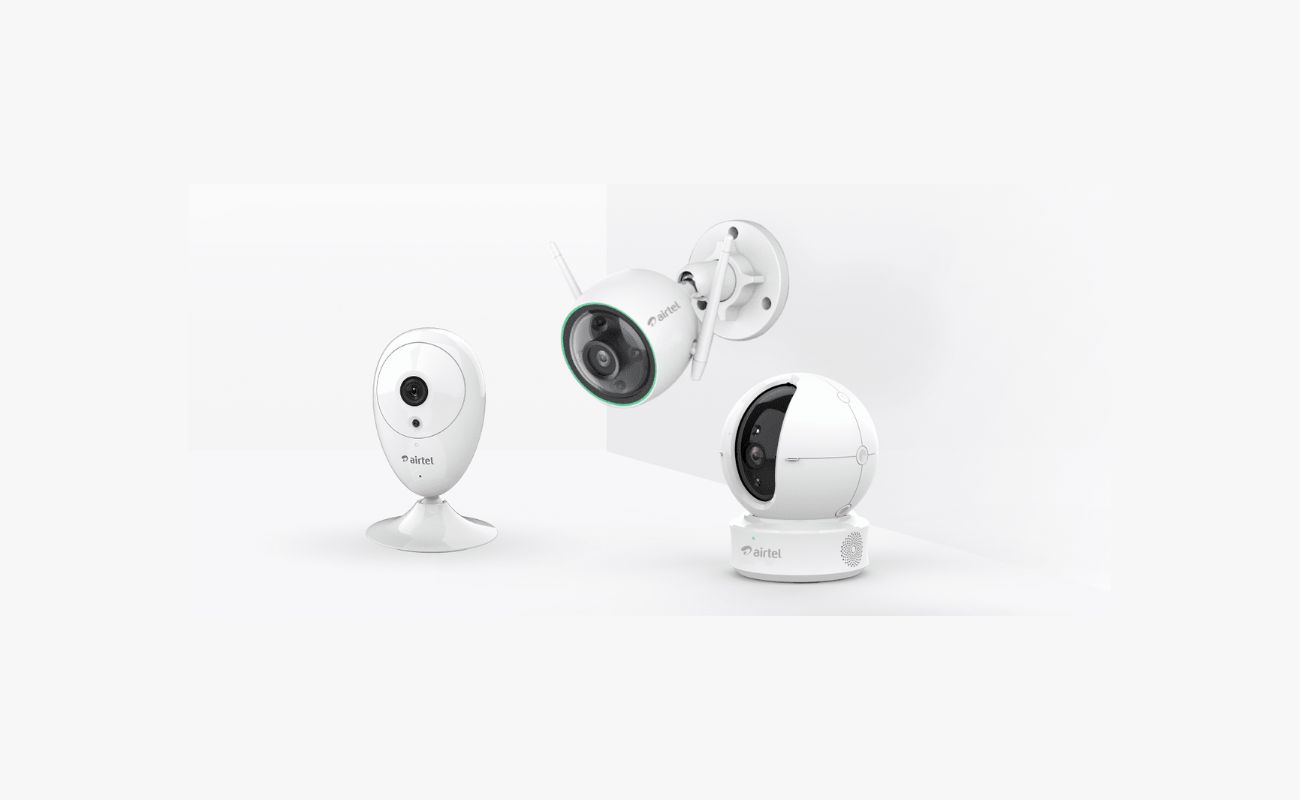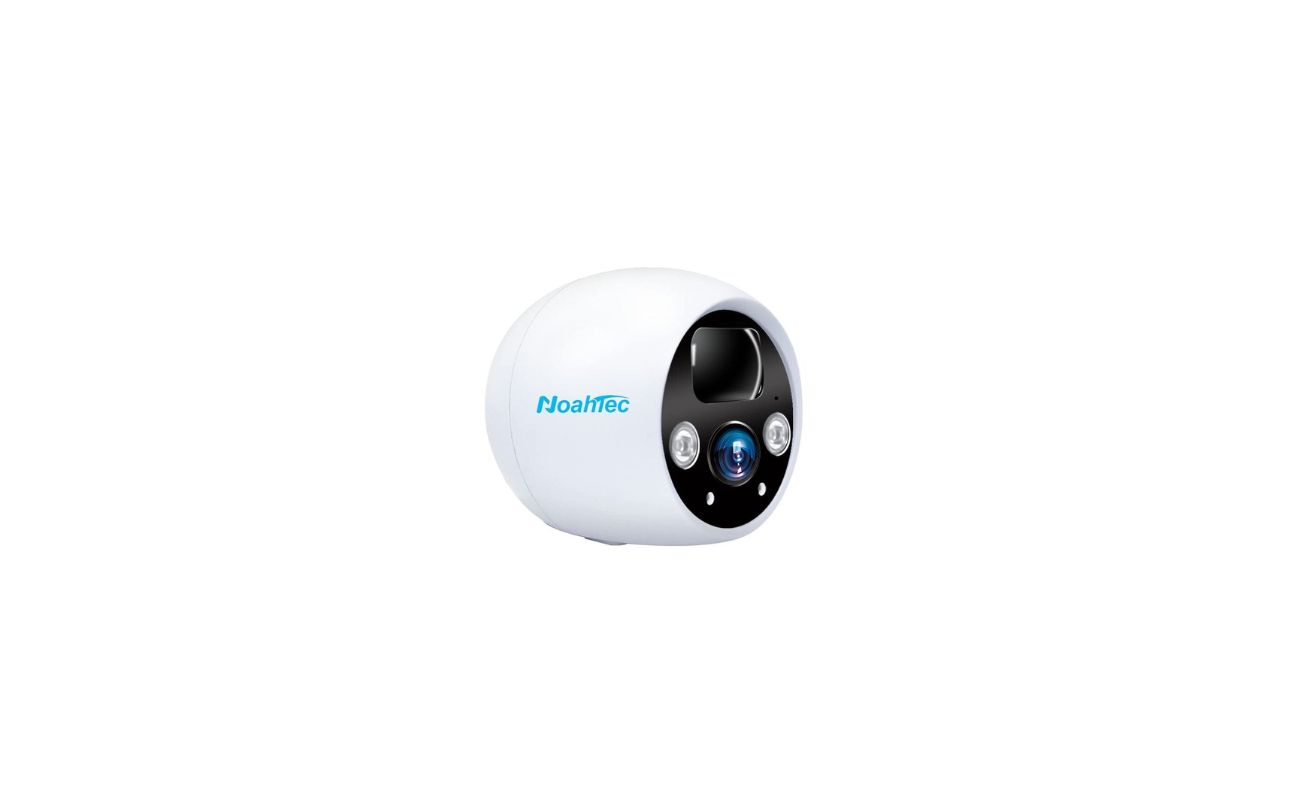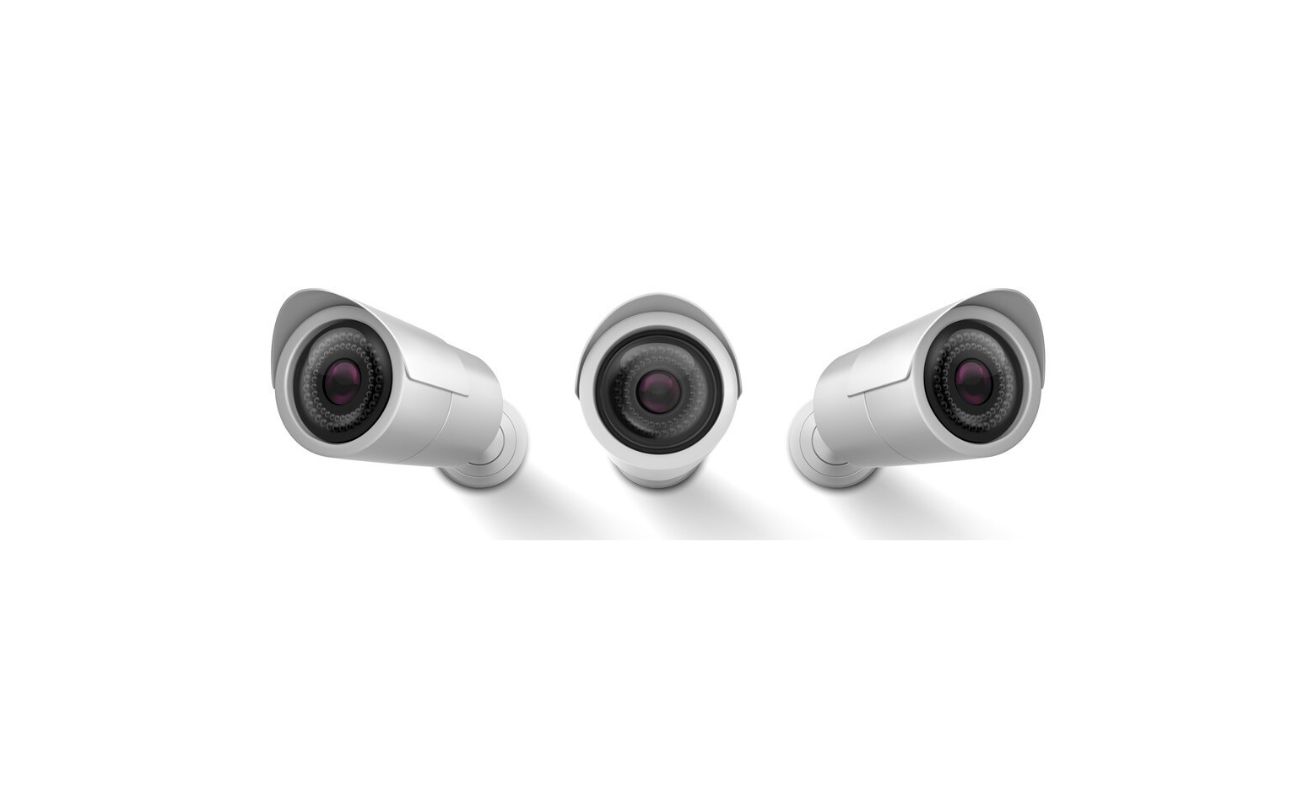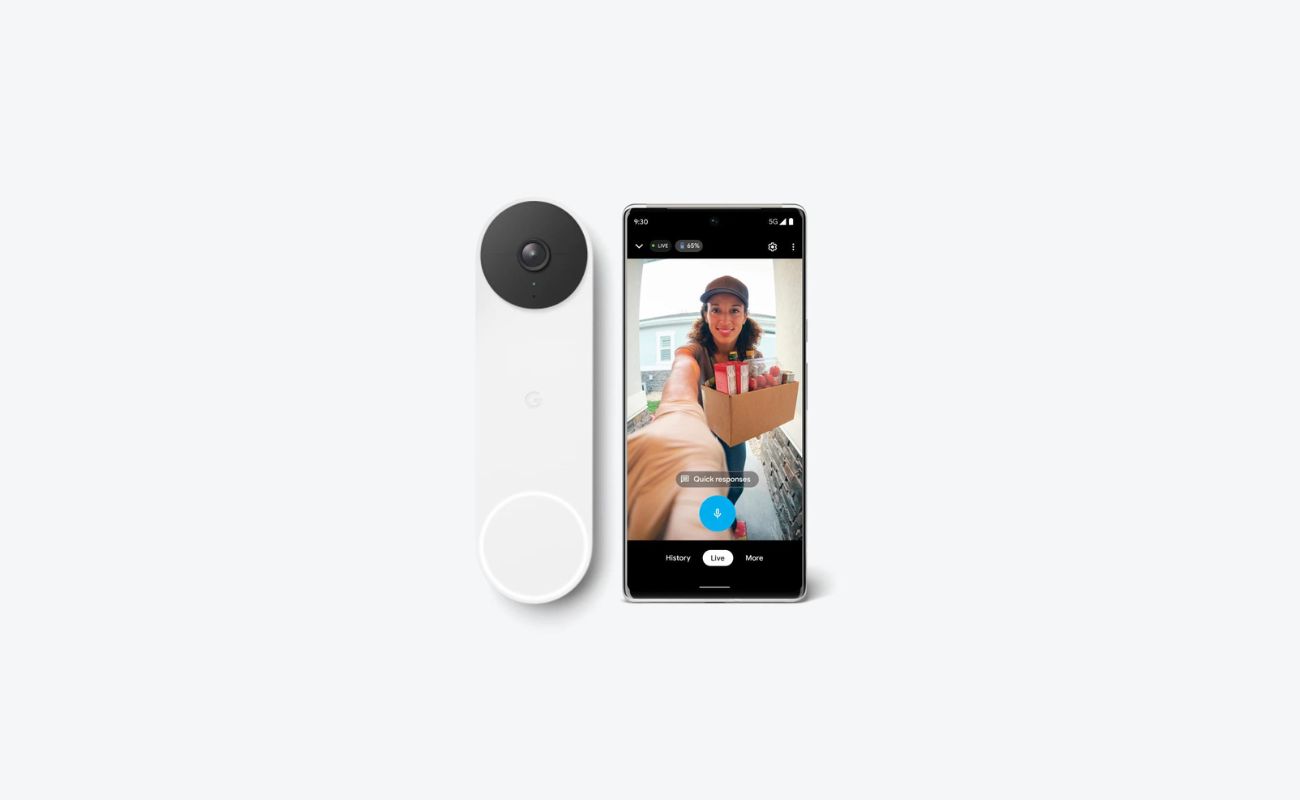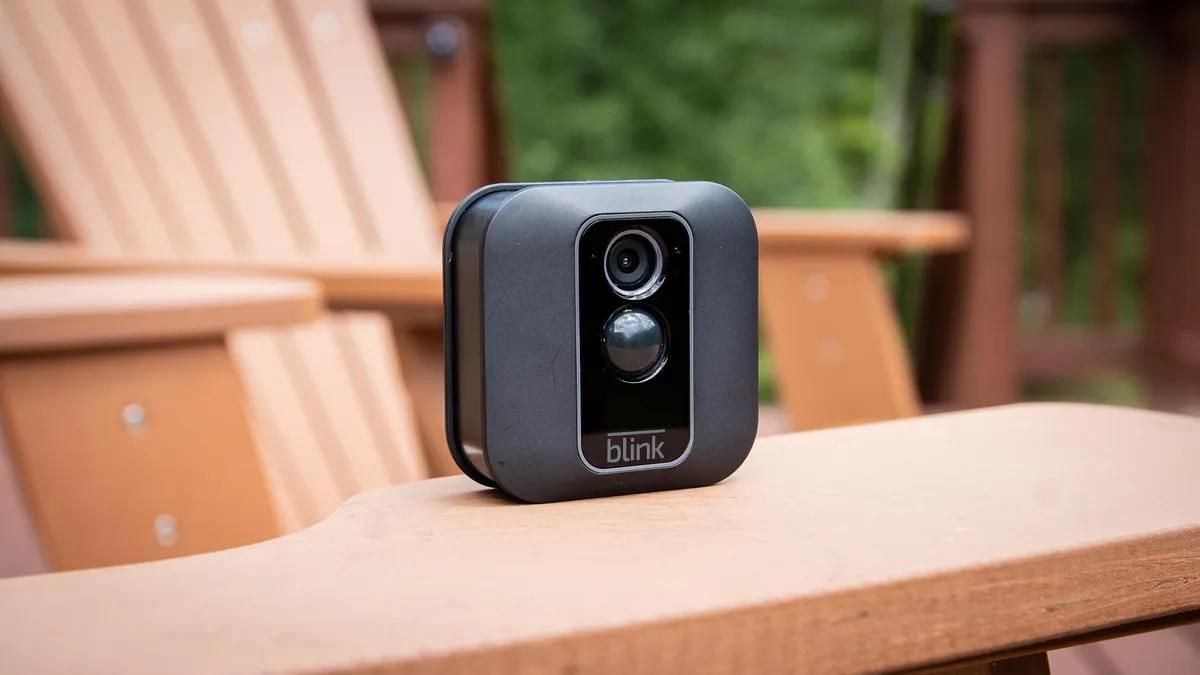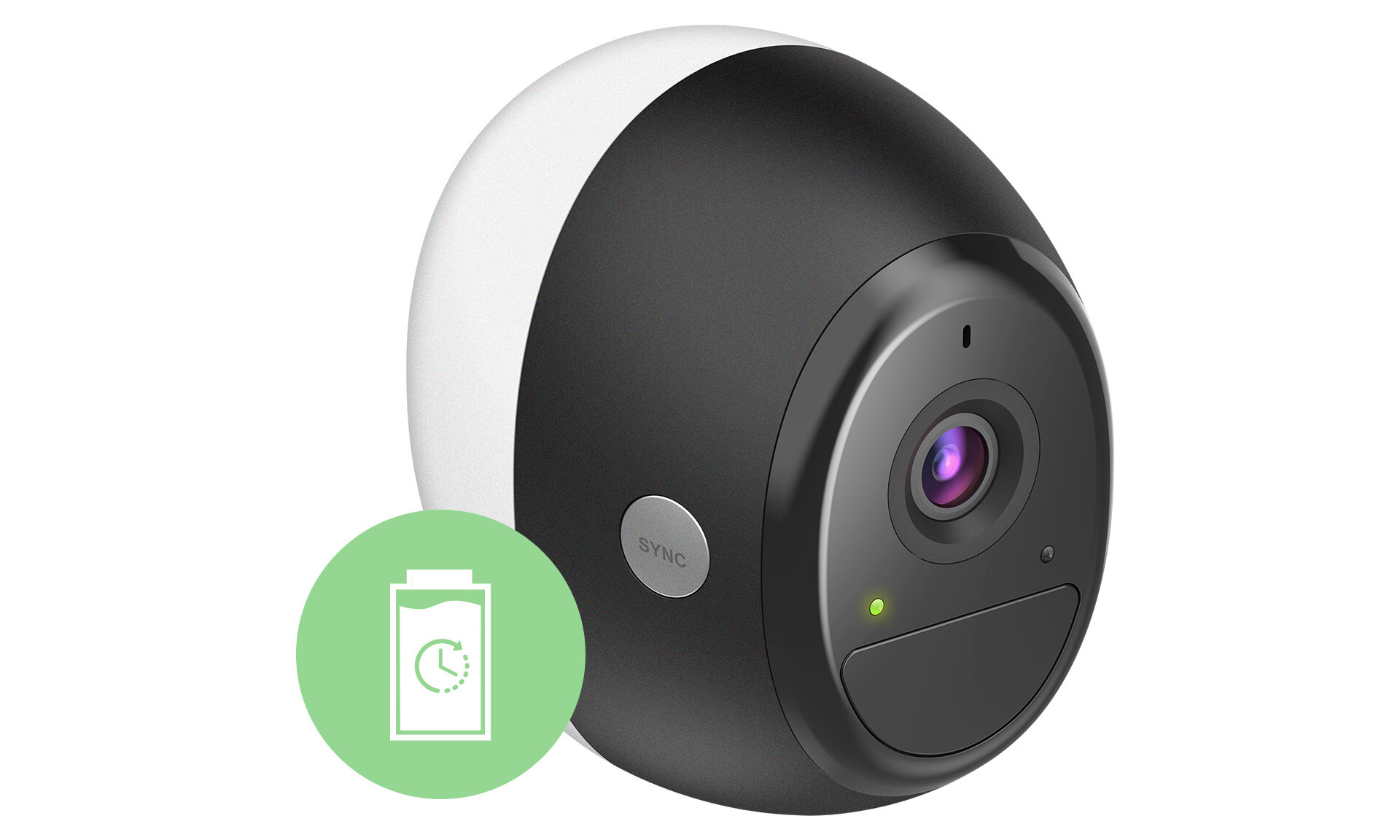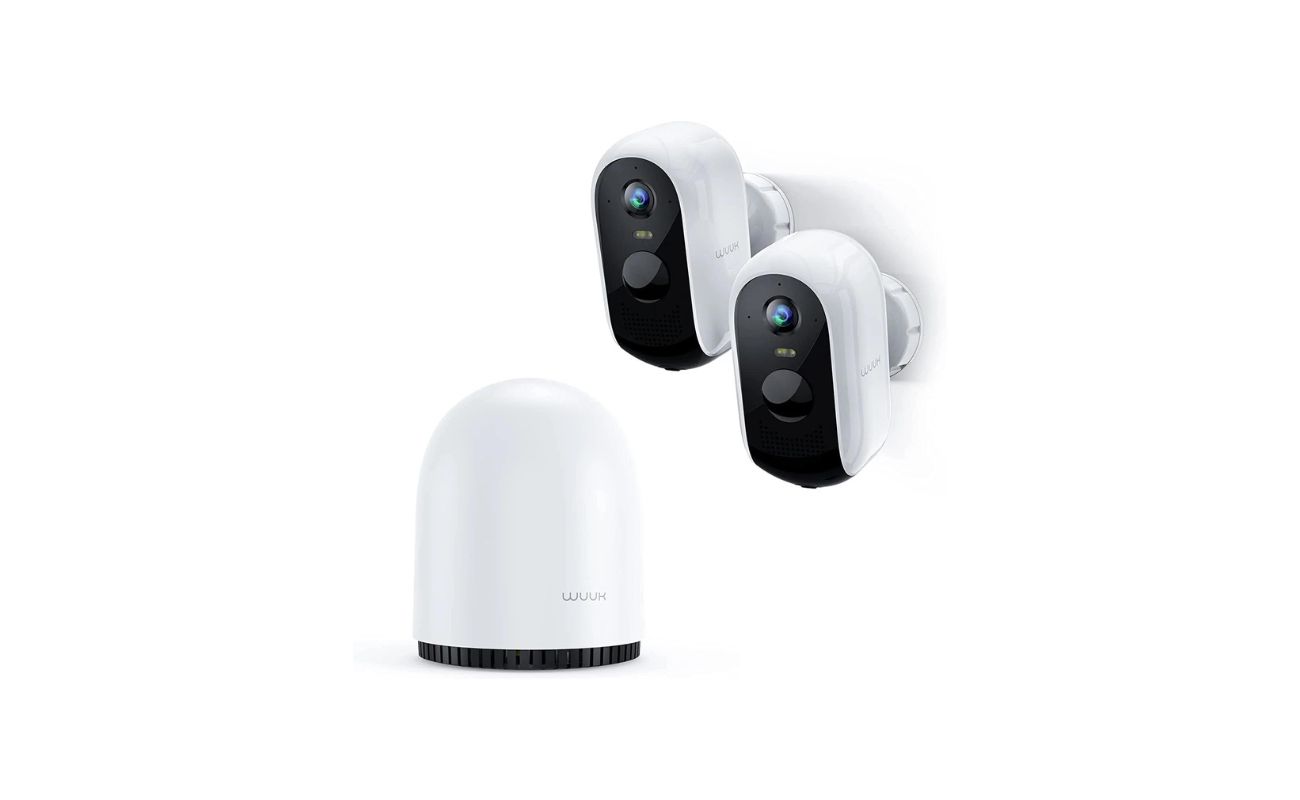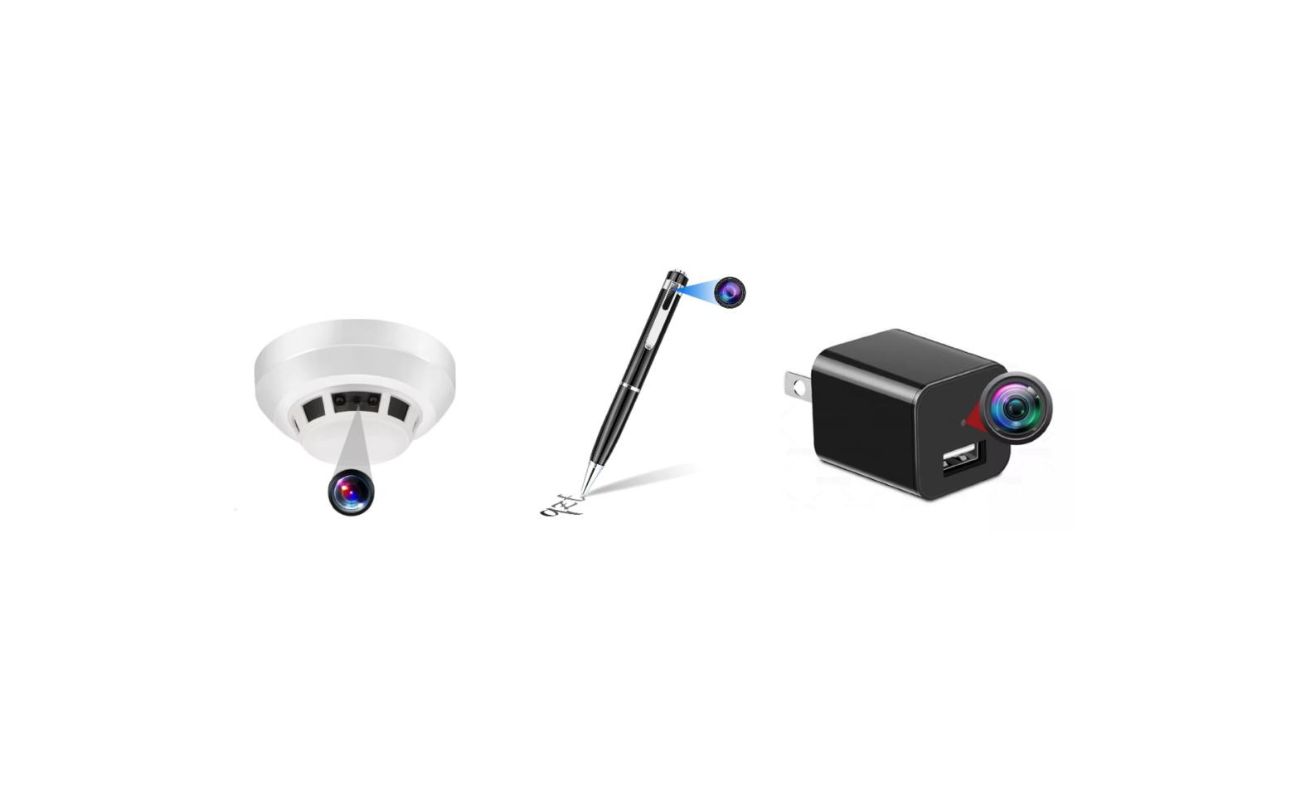Home>Home Security and Surveillance>How Do You Power A Wireless Security Camera
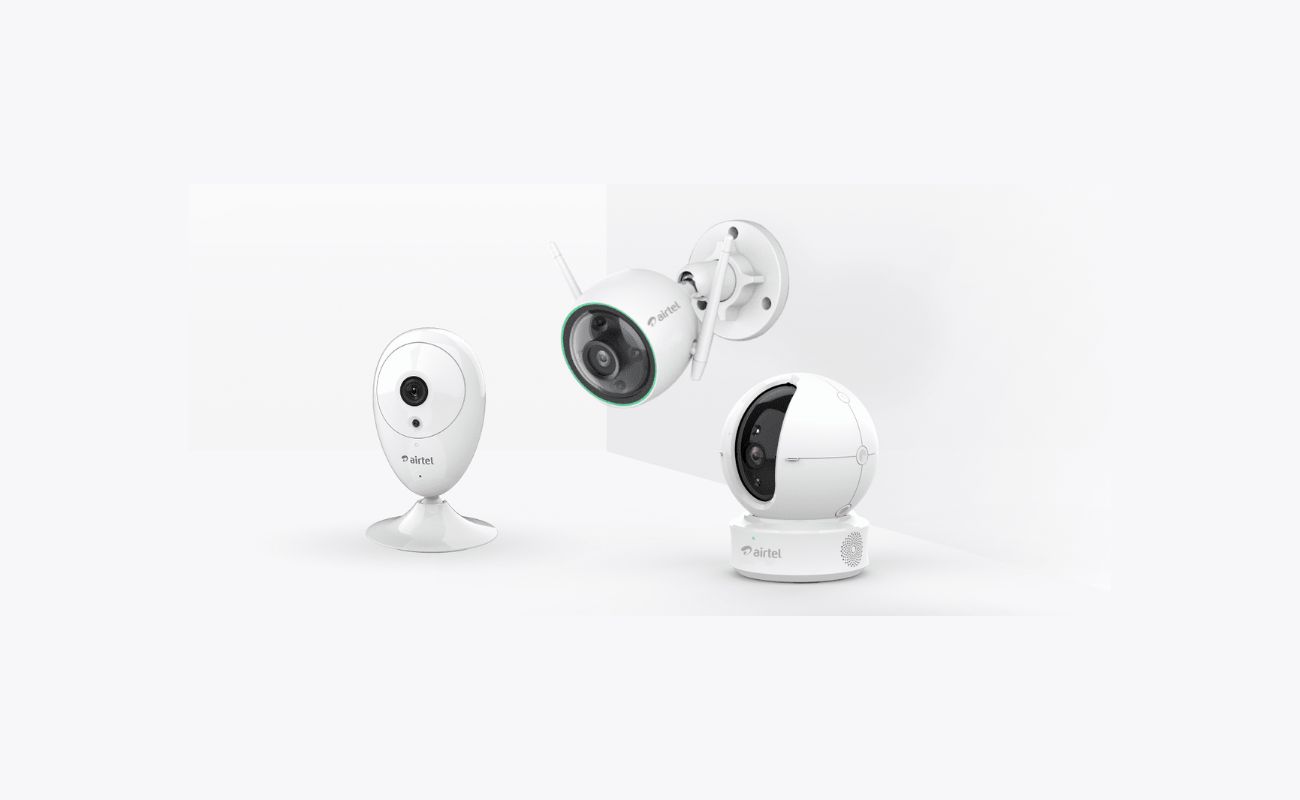

Home Security and Surveillance
How Do You Power A Wireless Security Camera
Modified: March 6, 2024
Discover how to power wireless security cameras for your home security and surveillance needs. Get expert tips and advice on selecting the best power source.
(Many of the links in this article redirect to a specific reviewed product. Your purchase of these products through affiliate links helps to generate commission for Storables.com, at no extra cost. Learn more)
Introduction
When it comes to home security and surveillance, wireless security cameras have become increasingly popular. These cameras offer convenience, flexibility, and ease of installation, making them an attractive option for homeowners looking to increase the safety of their property. However, one of the most important considerations when choosing a wireless security camera is how it will be powered.
The power source of a wireless security camera is crucial as it determines its operational capabilities and reliability. There are several power options available for wireless security cameras, each with its own set of advantages and considerations. Understanding these options is essential to make an informed decision about the best power source for your specific needs.
In this article, we will explore the different power options for wireless security cameras and discuss the factors to consider when choosing a power source. Whether you’re looking for a battery-powered camera, a solar-powered camera, a plug-in camera, or a PoE (Power over Ethernet) camera, this guide will help you make the right choice.
Before we dive into the specifics, it’s important to note that each power option has its own advantages and limitations. Ultimately, the decision should be based on factors such as camera location, accessibility, power outages, cost, sustainability, and installation requirements. By considering these factors, you can select the power source that best suits your needs.
In the following sections, we will explore each power option in detail, highlighting their features, benefits, and considerations. We will discuss battery-powered cameras, solar-powered cameras, plug-in cameras, and PoE cameras. By examining the pros and cons of each option, you will gain valuable insights to assist you in choosing the most suitable power source for your wireless security camera.
So, whether you want the flexibility of a battery-powered camera, the eco-friendliness of a solar-powered camera, the continuous power supply of a plug-in camera, or the reliability and scalability of a PoE camera, keep reading to discover the power option that will best meet your home security needs.
Key Takeaways:
- Choose the right power source for your wireless security camera based on factors like location, power outages, cost, installation, and future expansion. Consider battery-powered, solar-powered, plug-in, or PoE cameras for your specific needs.
- Battery-powered cameras offer flexibility, solar-powered cameras are sustainable, plug-in cameras provide continuous power, and PoE cameras offer scalability. Consider the advantages and considerations of each power option to make an informed decision for your home security needs.
Read more: How Do You Setup Wireless Security Cameras?
Power Options for Wireless Security Cameras
When it comes to powering wireless security cameras, there are several options to choose from. Each option offers its own benefits and considerations, so it’s important to understand the differences before making a decision. Let’s explore the various power options available for wireless security cameras:
- Battery-Powered Cameras: Battery-powered cameras are a popular choice as they offer flexibility and are easy to install. These cameras run on rechargeable batteries, eliminating the need for a power outlet. They can be placed anywhere within the wireless range, making them suitable for both indoor and outdoor use. Battery-powered cameras are ideal for renters or those who want a hassle-free installation. However, it’s important to consider the battery life and the need for regular recharging or battery replacements.
- Solar-Powered Cameras: Solar-powered cameras are a sustainable option that harnesses solar energy to keep the cameras running. These cameras come with built-in solar panels that charge the batteries during daylight hours. They are ideal for outdoor use and remote locations where access to a power source is limited. Solar-powered cameras are environmentally friendly and cost-effective in the long run, as they eliminate the need for regular battery replacements. However, they require sufficient sunlight exposure to ensure continuous operation.
- Plug-in Cameras: Plug-in cameras, as the name suggests, require a power outlet for operation. These cameras offer continuous power supply, ensuring uninterrupted monitoring and recording. They are suitable for both indoor and outdoor use, as long as there is easy access to a power source. Plug-in cameras eliminate the need for battery recharging or replacement and can provide higher video quality due to the stable power supply. However, they may have limitations in terms of camera placement, as they need to be within reach of a power outlet.
- PoE (Power over Ethernet) Cameras: PoE cameras are powered through an Ethernet cable, which combines both data and power transmission. This method allows for a single cable to connect the camera to a PoE switch or injector, simplifying installation and reducing the need for additional power cables. PoE cameras are ideal for larger properties or areas with multiple cameras, as they provide a reliable and scalable power solution. However, PoE cameras require a PoE switch or injector and may involve more complex installation compared to other power options.
Each power option has its own advantages and considerations, so it’s important to assess your specific requirements and constraints. Factors such as camera location, accessibility, power outages, cost, sustainability, and installation requirements should be taken into account when selecting the appropriate power source for your wireless security camera. By considering these factors, you can make an informed decision that meets both your security needs and your practical considerations.
Battery-Powered Cameras
Battery-powered cameras are a popular choice for wireless security systems due to their flexibility and ease of installation. These cameras run on rechargeable batteries, eliminating the need for a wired power source. Here’s a closer look at the features, benefits, and considerations of battery-powered cameras:
Features:
– Rechargeable batteries: Battery-powered cameras come with built-in rechargeable batteries that power the device. These batteries can be easily recharged using a power adapter or USB cable.
– Wireless connectivity: These cameras utilize Wi-Fi or other wireless protocols to transmit data and connect to your home network. This wireless connection allows for easy installation and placement without the need for additional wiring.
– Mobile app integration: Most battery-powered cameras come with a dedicated mobile app that allows you to monitor the camera feed, receive motion alerts, and control camera settings directly from your smartphone or tablet.
– Indoor and outdoor use: Battery-powered cameras are designed for both indoor and outdoor use. They usually come with weather-resistant housing to withstand various weather conditions.
Benefits:
– Easy installation: Battery-powered cameras are incredibly easy to install since they don’t require any wiring. Simply mount the camera in the desired location and connect it to your home Wi-Fi network.
– Flexibility and portability: Since battery-powered cameras are not limited by power outlets, you have the freedom to place them anywhere within the wireless range. This flexibility is particularly useful for monitoring areas where a power source is not easily accessible.
– Quick deployment: Battery-powered cameras are ideal for temporary installations or situations where you need immediate surveillance coverage. They can be easily moved from one location to another without the hassle of drilling holes or running cables.
– Minimal disruption during power outages: In the event of a power outage, battery-powered cameras will continue to function as long as the batteries are charged. This ensures that you still have surveillance coverage when you need it most.
Considerations:
– Battery life: The battery life of these cameras varies depending on factors such as camera usage, video recording quality, and frequency of motion detection. It’s important to consider the battery life and make sure it aligns with your surveillance needs. Keep in mind that higher resolution or constant recording might drain the battery faster.
– Regular maintenance: Battery-powered cameras require periodic battery recharging or replacement. It’s essential to establish a routine for checking and maintaining the battery levels to ensure uninterrupted surveillance coverage.
– Limited continuous recording: Due to the limitations of battery life, continuous recording for extended periods may not be feasible. If you require continuous recording, you may need to explore alternative power options such as plug-in cameras or PoE cameras.
Battery-powered cameras provide a convenient and flexible solution for wireless home security. They are ideal for renters, small properties, or temporary surveillance needs. However, it’s crucial to consider battery life, maintenance requirements, and limitations on continuous recording when choosing battery-powered cameras for your home security system.
Solar-Powered Cameras
Solar-powered cameras are an innovative and sustainable option for wireless security systems. These cameras utilize solar energy to power their operations, providing an eco-friendly and cost-effective solution. Let’s dive into the features, benefits, and considerations of solar-powered cameras:
Features:
– Solar panels: Solar-powered cameras are equipped with built-in solar panels that capture sunlight and convert it into electrical energy. These panels are specifically designed to maximize solar absorption and generate sufficient power for the camera’s operation.
– Rechargeable batteries: Solar-powered cameras are typically equipped with rechargeable batteries that store the excess energy generated by the solar panels. These batteries provide continuous power supply, even during periods of limited sunlight or at night.
– Wireless connectivity: Similar to other wireless security cameras, solar-powered cameras utilize Wi-Fi or other wireless protocols to connect to your home network and transmit data.
– Weather-resistant construction: Solar-powered cameras are built with durable and weather-resistant materials to withstand outdoor conditions. They can efficiently operate in various weather conditions, including rain, snow, and extreme temperatures.
Benefits:
– Sustainability: Solar-powered cameras are an environmentally friendly option, as they harness clean and renewable solar energy. By relying on solar power, you reduce your carbon footprint and contribute to a greener future.
– Cost-effective: While the initial investment in solar-powered cameras may be higher than other options, they offer long-term cost savings. Solar energy is free, and once the system is installed, you won’t need to pay for ongoing electricity consumption or battery replacements.
– Remote and off-grid monitoring: Solar-powered cameras are ideal for remote locations or areas without access to electrical outlets. They provide an independent power source, allowing you to monitor areas where running power cables is impractical or impossible.
– Continuous operation: Solar-powered cameras can operate continuously as long as they receive sufficient sunlight to charge the batteries. This ensures uninterrupted surveillance coverage and peace of mind.
Considerations:
– Sunlight exposure: The effectiveness of solar-powered cameras depends on the availability of sunlight in the camera’s location. It’s essential to consider factors such as the position of the sun, shading from surrounding objects, and seasonal variations in sunlight exposure. Ensure that the camera’s solar panel has enough sunlight exposure to generate sufficient energy.
– Backup power: While solar-powered cameras can operate independently, it’s advisable to have a backup power option in case of prolonged cloudy days or limited sunlight. This can include a backup battery or alternative power source to ensure continuous monitoring during periods of low solar energy.
– Installation complexity: Installing solar-powered cameras may require additional considerations compared to other options. Proper placement of the solar panels, wiring connections, and ensuring optimal sunlight exposure are crucial for the efficient operation of the camera. It’s recommended to consult with a professional or follow the manufacturer’s guidelines for installation.
Solar-powered cameras offer a sustainable and reliable power option for wireless security systems. They are ideal for outdoor use, remote locations, or areas with limited access to power sources. By harnessing solar energy, these cameras provide continuous surveillance coverage while minimizing the environmental impact. However, it’s important to consider sunlight exposure, backup power options, and installation complexity when choosing solar-powered cameras for your home security needs.
Plug-in Cameras
Plug-in cameras, as the name suggests, are wireless security cameras that require a direct connection to a power outlet for their operation. These cameras offer a continuous power source, ensuring uninterrupted monitoring and recording. Let’s explore the features, benefits, and considerations of plug-in cameras:
Features:
– Power requirement: Plug-in cameras need to be connected to a power outlet using an electrical cord. This ensures a constant power supply for the camera’s operation.
– High video quality: With a stable power supply, plug-in cameras can provide higher video quality compared to battery-powered or solar-powered cameras. You can expect clear and crisp footage for surveillance and evidence purposes.
– Wide range of options: Plug-in cameras come in various models, designs, and specifications to suit different requirements. Whether you need indoor cameras for monitoring specific areas or outdoor cameras for broader coverage, there are plug-in camera options available to meet your needs.
Benefits:
– Continuous power: One of the significant advantages of plug-in cameras is the uninterrupted power supply. Unlike battery-powered or solar-powered cameras that rely on battery life or sunlight exposure, plug-in cameras can operate continuously as long as they are connected to a power source.
– Reliable performance: With a stable power supply, plug-in cameras offer reliable and consistent performance. There is no need to worry about battery life or weather conditions affecting the camera’s operation.
– Easy installation: Plugging in the camera to a power outlet is a straightforward installation process. This makes plug-in cameras a convenient option for those who prefer a quick and hassle-free installation.
– No battery maintenance: Since plug-in cameras don’t rely on batteries, there is no need for regular recharging or battery replacements. This saves you time and effort, ensuring that the camera is always ready for use.
Considerations:
– Limited placement flexibility: The biggest consideration with plug-in cameras is their reliance on power outlets. You need to ensure that the camera is within reach of a power source. This can limit the placement options compared to battery-powered or solar-powered cameras, especially for outdoor installations.
– Vulnerability to power outages: In the event of a power outage or interruption, plug-in cameras will stop functioning unless you have a backup power source or a battery backup system in place. Consider the frequency and duration of power outages in your area and plan accordingly.
– Concealing power cables: While the camera itself may be discreet, the presence of power cables running from the camera to the outlet can be visually noticeable. It’s important to plan the installation carefully, considering cable concealment or using decorative channels to minimize the visual impact.
Plug-in cameras offer a reliable and continuous power source for wireless home security systems. They are suitable for both indoor and outdoor installations, providing high-quality video footage and peace of mind. However, it’s important to consider the limitations in terms of camera placement and vulnerability to power outages when opting for plug-in cameras. Proper planning and consideration of your specific needs will help you make an informed decision about the most suitable power source for your wireless security camera system.
PoE (Power over Ethernet) Cameras
PoE (Power over Ethernet) cameras are advanced wireless security cameras that receive both data and power through a single Ethernet cable. This innovative technology offers a reliable and scalable power solution for surveillance systems. Let’s explore the features, benefits, and considerations of PoE cameras:
Features:
– Power and data transmission: PoE cameras receive power and data signals through a single Ethernet cable. This eliminates the need for separate power cables and simplifies installation.
– PoE switch or injector: To power PoE cameras, you will need a PoE switch or injector. These devices provide the power over the Ethernet cable to ensure the camera receives the required power supply.
– Flexibility in camera placement: With PoE cameras, you have the flexibility to place the cameras wherever you have Ethernet connectivity. This allows for easy installation in both indoor and outdoor locations.
– High-quality video and audio: PoE cameras support high-quality video and audio transmission, ensuring clear monitoring and recording for security purposes.
Benefits:
– Simplicity and scalability: PoE cameras offer a simplified and scalable power solution. Since the power is transmitted through Ethernet cables, you can easily connect multiple cameras to a PoE switch or injector. This makes it convenient to expand your surveillance system without the need for additional power outlets or complex wiring.
– Reliable and uninterrupted power: With PoE technology, power outages won’t affect the operation of the cameras. They receive a continuous and reliable power supply as long as the PoE switch or injector is functioning properly.
– Easy installation and maintenance: Installing PoE cameras involves connecting them to a PoE switch or injector using Ethernet cables. This is a straightforward process that does not require professional electrical work. Additionally, you can centrally manage and monitor the cameras through the PoE switch or injector.
– Reduced cable clutter: PoE cameras eliminate the need for separate power cables, reducing cable clutter and simplifying the overall installation. This makes it easier to manage and maintain the surveillance system.
Considerations:
– PoE switch or injector requirement: To power PoE cameras, you need to have a PoE switch or injector. These devices may involve additional costs and require proper configuration and setup. It’s important to ensure compatibility between the cameras and the PoE switch or injector to guarantee optimal performance.
– Network infrastructure considerations: PoE cameras rely on your existing network infrastructure to transmit data and power. It’s essential to consider the capacity and reliability of your network to ensure smooth operation. If you have a large surveillance system or multiple PoE cameras, you may need to upgrade your network infrastructure to support the additional data and power requirements.
PoE cameras offer a reliable and scalable power solution for wireless surveillance systems. They provide flexibility in camera placement, simplified installation, and centralized management. However, it’s important to consider the requirements of a PoE switch or injector and the capacity of your network infrastructure when opting for PoE cameras. By ensuring compatibility and assessing your specific needs, you can benefit from the convenience and efficiency of PoE technology for your wireless security camera system.
When powering a wireless security camera, consider using a rechargeable battery pack or a solar panel for a sustainable and reliable power source. This will ensure continuous operation and reduce the need for frequent battery changes.
Factors to Consider When Choosing a Power Source
When selecting a power source for your wireless security camera, it’s important to consider several factors to ensure optimal performance and functionality. By evaluating these factors, you can make an informed decision that suits your specific needs. Here are the key considerations when choosing a power source for your wireless security camera:
1. Camera Location and Accessibility:
Evaluate the location where you intend to install the camera. Consider the proximity to power outlets, availability of sunlight if opting for solar power, and ease of access for maintenance or power cable connections. Ensure that the power source you choose is feasible and convenient for your camera’s placement.
2. Power Outages and Backup Options:
Take into account the frequency and duration of power outages in your area. If power outages are common, consider a power source that incorporates a backup option such as battery-powered cameras with long battery life or a backup power supply for plug-in cameras. This will ensure continuous surveillance coverage even during power interruptions.
3. Cost and Sustainability:
Consider the long-term cost implications and sustainability of the power source. Battery-powered cameras may require periodic battery replacements or recharging costs. Solar-powered cameras offer energy efficiency and free solar energy, but they may have a higher upfront cost. Evaluate the overall cost and sustainability of the power source based on your budget and environmental preferences.
4. Installation and Setup Requirements:
Assess the installation and setup requirements of the power source. Some power options, like battery-powered or solar-powered cameras, offer quick and hassle-free installation. Plug-in cameras may require electrical knowledge or professional assistance for wiring and connection to power outlets. PoE cameras require a compatible PoE switch or injector for power delivery. Consider your technical expertise or the availability of professional assistance when evaluating the installation requirements.
5. Compatibility with Camera System:
Ensure compatibility between the power source and your wireless security camera system. Different camera models and manufacturers may have specific power requirements or compatibility with certain power options. Verify that the power source you choose matches the specifications of your camera system to ensure proper functionality and performance.
6. Scalability and Expansion:
Consider your future plans for expanding your surveillance system. If you anticipate adding more cameras in the future, consider a power source that offers scalability, such as PoE cameras that can be connected to a PoE switch for easy expansion. This will save you from having to invest in additional power sources or dealing with wiring complexities as your system grows.
By carefully considering these factors, you can choose the power source that best meets your requirements for wireless security cameras. Whether it’s battery-powered cameras for flexibility, solar-powered cameras for sustainability, plug-in cameras for continuous power, or PoE cameras for scalability, your decision should be based on a thorough evaluation of these considerations. Selecting the right power source will ensure reliable and efficient operation of your wireless security camera system to enhance the safety and security of your home.
Camera Location and Accessibility
When choosing a power source for your wireless security camera, one of the most crucial factors to consider is the camera’s location and accessibility. The placement of your camera plays a significant role in determining the most suitable power option. Here’s why camera location and accessibility are important considerations:
1. Proximity to Power Outlets:
Assess the proximity of your camera’s desired location to power outlets. If you have a convenient power outlet nearby, plug-in cameras may be the most convenient and straightforward option. With plug-in cameras, you can easily connect the camera to the outlet using an electrical cable, providing a constant power supply without the need for batteries or solar panels.
2. Availability of Sunlight:
If your camera’s intended location has ample sunlight exposure, solar-powered cameras can be an excellent choice. Solar panels integrated into these cameras harness solar energy and convert it into electrical power, eliminating the need for a wired power source. This is especially beneficial for outdoor installations where access to power outlets is limited or impractical.
3. Ease of Installation and Maintenance:
Consider the installation and maintenance requirements associated with different power options. Battery-powered cameras offer the advantage of hassle-free installation, as they don’t require wiring or access to power outlets. Additionally, they are easy to maintain by simply recharging or replacing the batteries as needed. This makes battery-powered cameras ideal for areas with limited accessibility or for those who prefer a DIY installation approach.
4. Environmental Factors:
Evaluate the environmental factors surrounding your camera’s location. If the area is prone to power outages, choosing a power source with a backup option is crucial to ensure continuous surveillance coverage. Battery-powered cameras with long battery life or plug-in cameras with a backup power supply can keep your camera running during power interruptions, providing uninterrupted security monitoring.
5. Hidden or Discreet Placement:
Consider the visibility of power cables when placing your camera. Plug-in cameras require a physical connection to a power source, which may result in visible cables running along walls or ceilings. If aesthetics are a concern, you may prefer battery-powered or PoE cameras, which offer a neater installation without visible power cables.
6. Accessibility for Maintenance:
Think about the accessibility of the camera’s location for regular maintenance and upkeep. Battery-powered cameras are typically easier to access since they allow for flexible placement without the need for wired connections. In contrast, plug-in cameras may require unplugging and re-plugging for maintenance tasks, especially if they are mounted in higher or hard-to-reach locations.
By carefully considering the camera’s location and accessibility, you can choose the power source that best aligns with your specific requirements. Assess the proximity to power outlets, availability of sunlight, installation and maintenance ease, environmental factors, and accessibility for maintenance. By selecting the most suitable power source, you will ensure a seamless and reliable power supply for your wireless security camera, enhancing the overall safety and security of your home.
Power Outages and Backup Options
When considering the power source for your wireless security camera, it’s essential to evaluate the frequency of power outages in your area and the availability of backup options. Power outages can disrupt the function of your camera system, leaving your property vulnerable during those periods. Here’s why power outages and backup options are important factors to consider:
1. Frequency of Power Outages:
Research and understand the frequency and duration of power outages in your area. This information will help you determine the criticality of having backup options for your wireless security camera system. If power outages are frequent or last for extended periods, it becomes even more important to consider a backup power source.
2. Uninterrupted Surveillance Coverage:
Having a backup power source for your wireless security camera system ensures continuous surveillance coverage even during power outages. Interruptions in power can create vulnerable periods where your camera system is not operational, leaving your property unprotected. Backup options act as a contingency plan to maintain surveillance and monitoring capabilities when the primary power source is disrupted.
3. Battery-Powered Cameras:
Battery-powered cameras with long-lasting battery life are an excellent backup option during power outages. These cameras rely on built-in rechargeable batteries to provide continuous power supply. Ensure that the camera you choose has sufficient battery capacity to withstand the outage duration and align with your surveillance needs.
4. Plug-In Cameras with Backup Power Supply:
If you prefer plug-in cameras, consider investing in a backup power supply option. This can be in the form of an uninterruptible power supply (UPS) or a backup battery system. These systems act as a temporary power source during outages, allowing your plug-in cameras to continue functioning until the primary power is restored.
5. Solar-Powered Cameras with Battery Backup:
Solar-powered cameras equipped with a battery backup system offer a reliable combination of renewable energy and backup option. The solar panels harness sunlight to power the camera and simultaneously charge the backup batteries. This ensures continuous operation during both regular conditions and power outages.
6. Monitoring Power Levels:
Regardless of the backup option chosen, it’s important to regularly monitor the power levels of your cameras and backup systems. This allows you to ensure that the batteries are charged and ready to provide power when needed. Establishing a maintenance routine to check and recharge or replace batteries ensures that your backup options are functioning optimally.
By considering these factors, you can ensure that your wireless security camera system remains operational during power outages. Assess the frequency and duration of outages in your area, evaluate backup power options such as battery-powered cameras or plug-in cameras with backup power supply, and monitor the power levels regularly. Proactively planning for power outages will help maintain uninterrupted surveillance coverage and protect your property even during periods of electrical disruption.
Read more: How Do Wireless Security Cameras Work
Cost and Sustainability
When choosing a power source for your wireless security camera, it’s important to consider both the cost and sustainability factors. Understanding the cost implications and the environmental impact of the power source will help you make an informed decision. Here’s why cost and sustainability are important factors to consider:
1. Initial Investment:
Evaluate the upfront costs associated with different power sources for your wireless security camera system. Each power option has its own initial investment requirements. For example, plug-in cameras typically have lower upfront costs as they don’t require additional equipment like solar panels or PoE switches. On the other hand, solar-powered or PoE cameras may involve higher initial costs due to the need for solar panels or specialized equipment.
2. Ongoing Operating Costs:
Consider the ongoing operating costs associated with each power source. Battery-powered cameras may require regular battery replacements or recharging costs. Solar-powered cameras may have minimal ongoing costs as they rely on renewable solar energy. Similarly, PoE cameras may have lower ongoing costs as the power is delivered over existing Ethernet cables.
3. Long-Term Cost Savings:
Evaluate the long-term cost savings of each power source. Consider the lifespan of the power source and its maintenance requirements. Battery-powered cameras may offer cost savings upfront, but ongoing battery replacements can add up over time. Solar-powered cameras, while having a higher initial cost, can provide significant long-term savings as they utilize free solar energy. PoE cameras offer scalability and the potential for cost savings with the ability to power multiple cameras from a single PoE switch.
4. Environmental Impact:
Assess the sustainability and environmental impact of the power source. Consider the carbon footprint of each power option and its contribution to greenhouse gas emissions. Battery-powered cameras, although convenient, require regular disposal of batteries, potentially adding to environmental waste. Solar-powered cameras utilize clean and renewable energy, contributing to a greener environment. PoE cameras reduce the need for additional power sources, leading to more efficient energy consumption.
5. Energy Efficiency:
Evaluate the energy efficiency of the power source. Examine the power consumption of the cameras and how effectively each power option utilizes energy. Battery-powered cameras may have energy-saving features to optimize battery life, while solar-powered cameras harness solar energy directly. PoE cameras offer efficient power transmission through Ethernet cables, reducing energy loss.
6. Return on Investment:
Consider the return on investment (ROI) for each power source. Calculate the total costs, including initial investment, ongoing operating costs, and potential long-term cost savings. Compare the ROI of different power options to determine which provides the best value for your investment.
By considering the cost and sustainability factors, you can make an informed decision that aligns with your budget and environmental preferences. Evaluate the initial investment, ongoing operating costs, long-term savings, environmental impact, energy efficiency, and potential ROI of each power source for your wireless security camera system. This will help you choose a power source that not only meets your surveillance needs but also aligns with your financial goals and commitment to sustainability.
Installation and Setup Requirements
When choosing a power source for your wireless security camera, it’s important to consider the installation and setup requirements associated with each power option. Different power sources may have varying installation complexities and setup procedures. Here’s why installation and setup requirements are important factors to consider:
1. Wiring and Connectivity:
Assess the wiring and connectivity requirements of each power source. Battery-powered cameras offer the easiest installation since they don’t require any wiring. Simply mount the camera in the desired location, and you’re good to go. Plug-in cameras require access to power outlets and the installation of electrical cables. Solar-powered cameras may require the positioning of solar panels and running cables to connect the panels to the cameras. PoE cameras necessitate the installation of Ethernet cables and a compatible PoE switch or injector.
2. Mounting and Placement:
Consider the mounting and placement options available for each power source. Battery-powered cameras can be easily mounted almost anywhere without restrictions. Plug-in cameras require proximity to power outlets, which may limit their placement options. Solar-powered cameras must be placed in areas with ample sunlight exposure to ensure efficient solar charging. PoE cameras can be installed anywhere with Ethernet connectivity, providing flexibility in camera placement.
3. Technical Expertise:
Evaluate your technical expertise and comfort level with the installation and setup process. Battery-powered cameras and plug-in cameras generally require minimal technical knowledge, making them suitable for DIY installations. Solar-powered cameras and PoE cameras may involve more advanced installation procedures and might require professional assistance, especially for the positioning of solar panels or setting up PoE infrastructure.
4. Compatibility:
Ensure compatibility between the power source and your camera system. Different camera models and power options may have specific compatibility requirements. Verify that the power source you choose, whether it’s batteries, solar panels, power outlets, or PoE switches, is compatible with your camera system. This ensures seamless integration and optimal performance.
5. Maintenance and Upkeep:
Consider the maintenance and upkeep requirements associated with each power option. Battery-powered cameras require periodic recharging or battery replacements. Solar-powered cameras may require occasional cleaning and maintenance of the solar panels to ensure optimal performance. Plug-in cameras may require occasional checks to ensure the power cables are securely connected. PoE cameras require regular inspection of the Ethernet cables and the PoE switch or injector.
6. Expandability:
Think about potential future expansions of your camera system. If you plan to add more cameras in the future, consider a power source that offers scalability. Plug-in cameras and PoE cameras allow for easy expansion by simply adding more cameras and connecting them to the existing power source. This reduces the need for additional wiring or power outlets in the future.
By carefully considering the installation and setup requirements, you can choose a power source that aligns with your technical capabilities and installation preferences. Assess the wiring and connectivity, mounting and placement options, technical expertise required, compatibility with your camera system, maintenance needs, and expansion possibilities. This will help you select a power source that not only provides reliable power for your wireless security camera but also ensures a smooth installation process and easy maintenance in the long term.
Conclusion
Choosing the right power source for your wireless security camera is crucial in ensuring optimal performance, reliability, and convenience. Throughout this guide, we have explored the various power options available, including battery-powered cameras, solar-powered cameras, plug-in cameras, and PoE cameras. Each option offers its own set of advantages and considerations, allowing you to find the power source that best suits your specific needs.
Considerations such as camera location and accessibility, power outages and backup options, cost and sustainability, installation and setup requirements, and future expandability should guide your decision-making process. By evaluating these factors, you can make an informed choice that aligns with your budget, technical expertise, environmental preferences, and long-term goals.
Battery-powered cameras provide flexibility and ease of installation, making them ideal for temporary surveillance needs or areas without power outlets. However, it is important to monitor battery life and plan for regular maintenance.
Solar-powered cameras offer a sustainable and environmentally friendly option, harnessing solar energy to power the cameras. They are especially advantageous in remote or outdoor locations where access to power outlets is limited. Keep in mind sunlight exposure and consider backup options for periods of low solar energy.
Plug-in cameras offer continuous power supply and are suitable for indoor or outdoor use as long as power outlets are accessible. They provide high-quality video footage and eliminate the need for battery maintenance. However, consider cable management and power outage vulnerability.
PoE cameras combine power and data transmission through Ethernet cables, providing a scalable and reliable power solution. They are ideal for larger surveillance systems and offer easy installation and centralized management. However, they require a compatible PoE switch or injector and may involve additional setup complexity.
In conclusion, choosing the right power source for your wireless security camera is a decision that requires careful consideration of various factors. By assessing your specific requirements, as well as the benefits and considerations of each power option, you can ensure a power source that meets your needs for convenience, reliability, cost-effectiveness, sustainability, and scalability.
Remember to adapt your decision to factors such as camera location, power availability, environmental conditions, and technical capabilities. Whether you opt for battery-powered cameras, solar-powered cameras, plug-in cameras, or PoE cameras, prioritize the power source that provides seamless and uninterrupted surveillance coverage, enhancing the safety and security of your home.
Frequently Asked Questions about How Do You Power A Wireless Security Camera
Was this page helpful?
At Storables.com, we guarantee accurate and reliable information. Our content, validated by Expert Board Contributors, is crafted following stringent Editorial Policies. We're committed to providing you with well-researched, expert-backed insights for all your informational needs.
